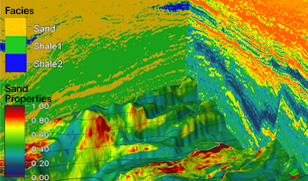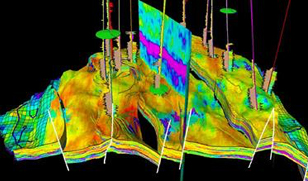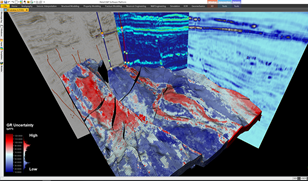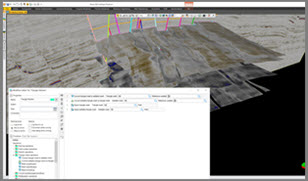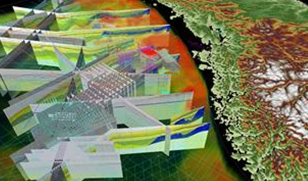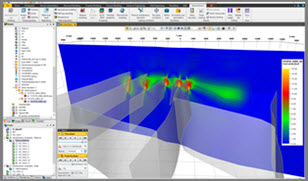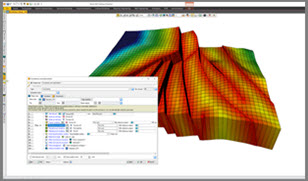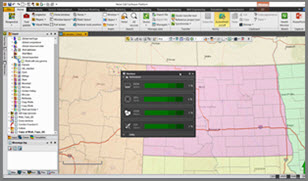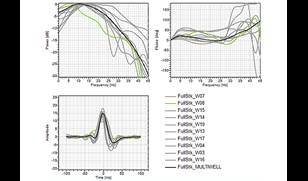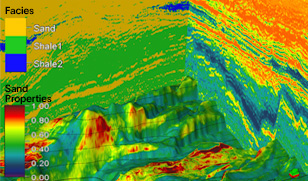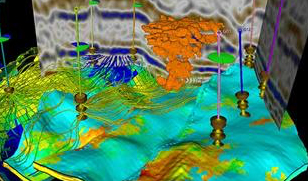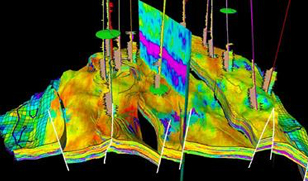Petrel 2020 Features
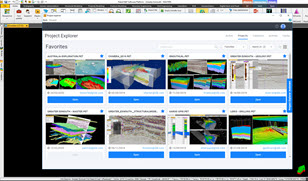
Share data across multi-disciplinary teams and connect your exploration, field development and production decisions to the science that made them.
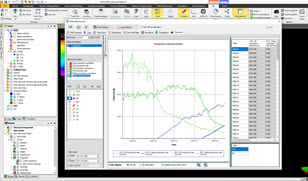
Investigate hundreds to thousands of wells quickly and easily.
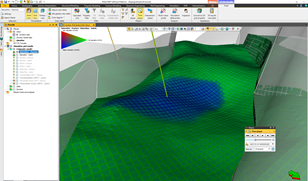
From the simple to the complex, capture your reservoirs geological history and characteristics without sacrificing any detail during simulation.
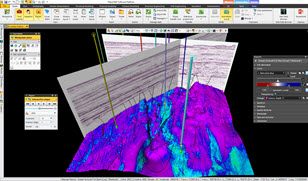
Floating Widgets properties are now saved.

Model construction is now up to three times faster than Petrel 2019.3.
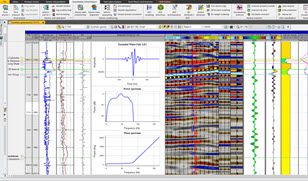
Whether you’re working in time or depth, synthetics have never been easier.
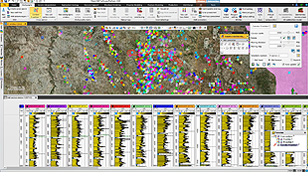
Productivity improvements to delight every geoscientist
Petrel 2020.2 & 2020.3
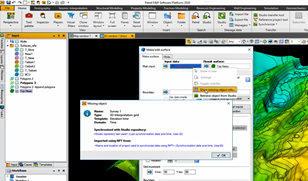
Examine metadata to help you find a missing or deleted object.
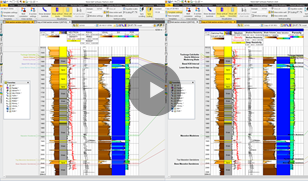
Customize your well log headers in the well section window.
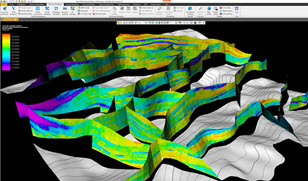
Assess reservoir integrity to make better informed field development decisions.
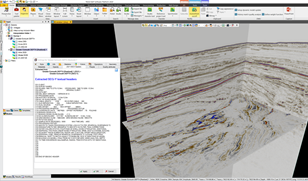
EBCDIC header information saved with ZGY format seismic.
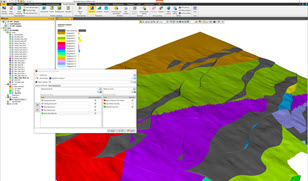
Enhanced reservoir characterization for complex reservoir systems.
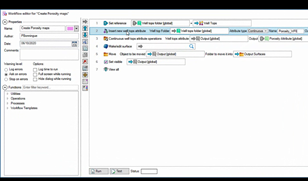
Use the workflow editor to automate tedious everyday tasks so you can focus on the reservoir.
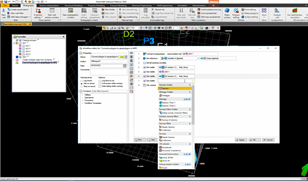
Use the improved smart search performance to quickly find the object you need.
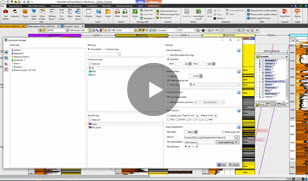
Flexible and efficient well log exports.
Petrel 2020 features
Project explorer
Available exclusively in DelfiI
In Petrel 2020 data can be liberated into the Delfi data ecosystem. This means that you can connect the geoscience decisions you make in Petrel subsurface software to exploration (the ExplorePlan accelerated exploration planning solution), to drilling plans (the DrillPlan coherent well construction solution), and to field development plans (the FDPlan agile field development planning solution). It also means you can view what data is in a project before you open it. It means project versioning is automatic and it means that you no longer have to wait for long saves.
You can now save your Petrel project into the Delfi data ecosystem, liberate your Petrel subsurface software data and connect it to the ExplorePlan solution, the FDPlan solution, the DrillPlan solution and more for unrivalled integration. Tie your exploration, field development and production decisions to the science that made them.
Decision tracking aside, the liberation Petrel data delivers a brand-new tool for more effective project management—the Petrel project explorer. Before you even open Petrel , you can view what data resides in a project, who last worked on it, and what is displayed in the project windows. You can also, examine the project metadata and perform basic analytics to get a fresh perspective of your geoscience data.
What does this mean for you, as a Petrel subsurface software user? It means that you no longer have to wait for long saves to complete—incremental saves mean that only your new work is saved. It means that you no longer have to create milestone projects—every incremental save is kept, meaning you can go back to it whenever you want. It means you can use APIs in the Delfi developer portal to liberate data previously locked in Petrel projects.
Data courtesy of Geoscience Australia
The Project Explorer is only available in the Delfi digital platform.
Back to top
Well data reconnaissance for high volume workflows
Use the new Well Data Browser to quickly and easily investigate your well data before moving onto more detailed well correlation workflows.
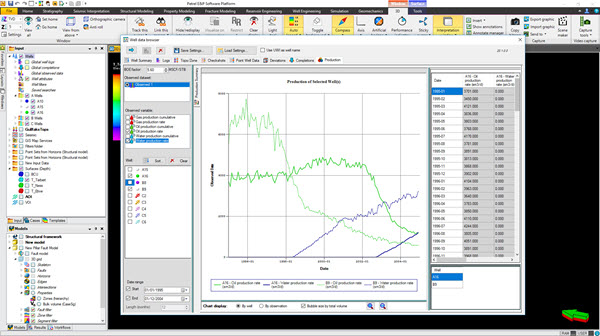
We’ve incorporated the Well Data Browser plug-in into Petrel 2020. This tool enables you to quickly and easily investigate your well data before moving onto more detailed well correlation workflows. After selecting and filtering the data you want to investigate, you can view spreadsheets for well logs, trajectories, point well data, completions, and more in one place without having to open each of them from the input pane. You can also get an overview of your production data, viewing bubble charts by well or by observation. The Well Data Browser is perfect for projects where you have a high volume of well data that you need to examine quickly.
Back to top
Implicit fracture modeling for depogrids
Dual-porosity, dual permeability workflows are critical for static and dynamic reservoir characterization of naturally fractured reservoirs. In Petrel 2020, you can perform these workflows on depogrids, meaning you can capture complexity at every scale in your reservoir, without compromise.
Depogrid offers you the ability to model both complex and simple reservoir architecture (whether that’s complex sequence stratigraphic relationships or horst and graben structures) without compromising that complexity during simulation. Petrel 2020 introduces implicit fracture modeling for depogrids to complement the existing dual-porosity, dual-permeability workflows available using the INTERSECT high-resolution reservoir simulator. This enables you to model and simulate complexity at every scale of your reservoir.
You can also improve the reliability of your depogrid simulation model further by incorporating downhole dynamic data and generating simulated RFT/PLT logs to compare against measured RFT and PLT during history matching.
Back to top
Find your tools right where you left them
Petrel subsurface software now saves the size, position, and settings for the tool palette, inspector, players, and visual filters—so you quickly find the tools you need every time you open Petrel.
The size, position and settings for the tool palette, inspector, players, and visual filters are saved when you close Petrel, so that next time you open your session and select the tools you need, they’ll be right where you left them. The properties are not saved per project, so you can recover them for any project you open in Petrel subsurface software, and across multiple screens.
For the tool palette and players, the tool selection also persists. Whether you had the tools open for quantitative interpretation or facies modelling, or both, they will be restored next time you open Petrel.
Combined with the ability to customize your ribbon and tool palettes, Petrel subsurface software offers you continuity in your work and a truly personalized user experience.
Data courtesy of Geoscience Australia
Back to top
Volume-based modeling performance improvements
The algorithms used in the model construction process of volume based modeling have been optimized and deliver up to a three-fold improvement in runtime.
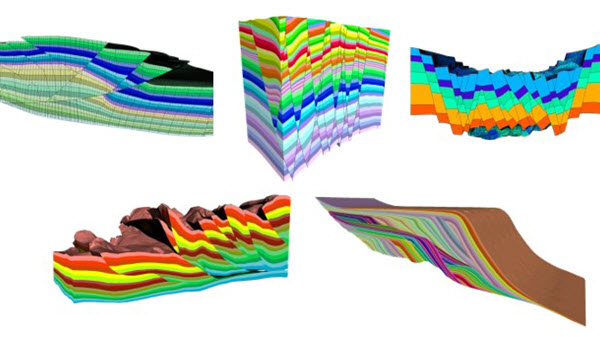
Optimizations to the model construction algorithms in Petrel 2020.1 deliver up to a three-fold increase in performance. This performance improvement affects all models, however models with large input datasets, large numbers of fault-fault or horizon-fault intersections or multiple sequences will see the most significant reduction in runtime. For multi-sequence models activating the new ‘air-interpretation’ option will further improve the model construction performance.
Back to top
Depth synthetics
With the completion of the depth synthetic workflow in Petrel 2020, the software now offers you full flexibility regardless of the domain you’re working in.
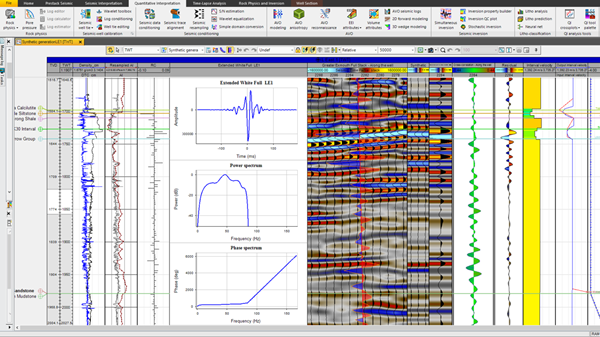
Establishing an accurate tie from well data to seismic data is critical to ensure that all your interpretations and models are calibrated. With the completion of the depth synthetic workflow in Petrel 2020, the software now offers you full flexibility regardless of the domain you’re working in.
In Petrel 2020, you can add user-defined calibration points to a study, or create a study entirely based on user-defined points, giving you better control of your well tie outside of well tops. Auditability is ensured as all alignment points are recorded and stored inside the study.
Back to top
Click less
In Petrel 2020 we continue to deliver performance improvements to improve your everyday productivity and reduce the number of mouse clicks and overall mouse movement you need to complete your work.
Some of the latest performance improvements delivered in 2020 include:
- changes to the workflow editor interface, including improved readability and collapsible sections
- improvements in the well section window enable you to resize your windows 90% faster than Petrel 2019.3
- mouse movement reduction of 48% when working with corridor cross sections compared to Petrel 2019.3
- up to a 78% click reduction when bulk editing well data when compared to Petrel 2019.3
-
volume-based model construction is up to three times faster than 2019.3
Back to top
Recover deleted objects
Ever been unable to complete an operation or workflow because data has been removed or is missing from your project? Petrel 2020.3 offers a solution to recover metadata on deleted objects or find them in the Studio platform.
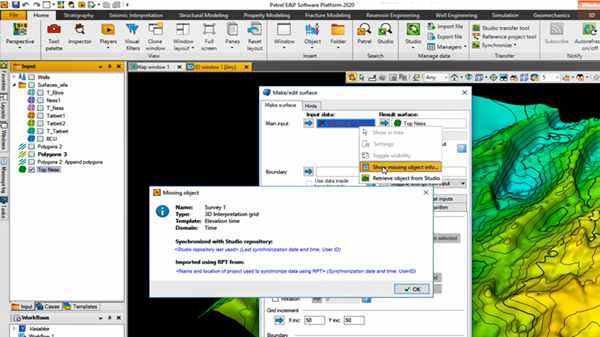
Now when you come across a missing object in a workflow or operation, you can find ‘simple’ and ‘advanced’ information on an object to help you find it. Simple information includes object type, template and domain. Advanced information, which can only be exported in a private format, includes object name and import/reference project tool/Studio synchronization history. The new private format for exported workflow editor scripts ensures compliance with privacy policies and standards.
Edit well log headers
Petrel 2020.3 delivers the long-awaited ability to edit well log headers, along with numerous other visualization tools to make your work in the well section window easier.
In Petrel 2020.3 you can now customize the log name, font size, font color and apply bold, italics or underline text for improved clarity while working with well sections. Settings are saved with the well section template and can easily be applied to new cross-sections. You can also display both linear and logarithmic scales in a single track making petrophysical analysis easier in conventional workflows. Finally, you can further improve your well section display by customizing well top label styles (font size, font colour and apply bold, italics or underline text), hiding inter-well surface lines and displaying well top sub-labels between wells.
Back to top
Integrated fault seal analysis for Depogrids
Make better-informed field development decisions by assessing reservoir integrity using the new Structural and Fault Analysis operations available on Depogrids. Consume the output fault properties directly into reservoir simulation, uncertainty, and history matching workflows to get a detailed and more accurate understanding of reservoir behavior.
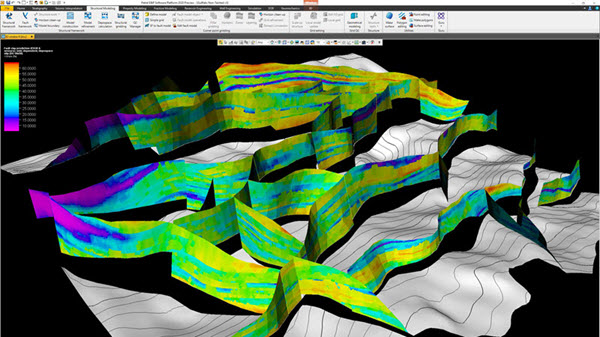
To assist you in your analysis of structural model quality and fault seal behavior, we have added the following fault operations for Depogrids in Petrel 2020.3:
-
Dip/Dip direction
-
Fault throw, displacement and heave
-
Fault clay content prediction
-
Threshold pressure and column height prediction
-
Fault permeability prediction
-
Fault thickness prediction
-
Fault flow indicators and mean properties
-
Fault transmissibility scaling
A new method for calculating fault slip, utilizing the depositional space mapping, is also available for Depogrid faults. This approach significantly improves the estimation of fault properties for curved faults and around fault intersections.
Spatially varying fault properties are typically captured within fault transmissibility multipliers and exported to simulation. However, these multipliers cannot be modified in simulator history matching workflows without compromising the geological inputs behind their generation. As a result, the process of updating multipliers is prone to errors and disconnected from the reservoir simulator.
Geological fault properties generated on Depogrids can be consumed directly in the INTERSECT high-resolution reservoir simulator, offering you a new integrated fault seal analysis workflow. This workflow enables the direct consumption of geologically defined fault properties (such as permeability, thickness, and threshold pressure) in the INTERSECT simulator. In addition, a new scaling factor property is now available for uncertainty analysis and history matching workflows to accurately adjust these properties between simulation runs. This improved workflow will enhance the accuracy of your reservoir model and increase efficiency in dynamic history matching, ensuring an optimal field development plan.
Back to top
Seismic traceability
EBCDIC header information is now captured and stored when you realize ZGY format seismic from SEG-Y files, greatly improving the integrity of your seismic and helping you to quickly track down source data. The saved metadata can be found in a new tab in the Settings dialog of the output ZGY data file.
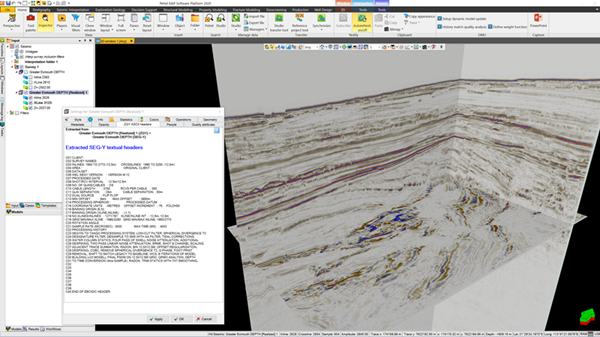
When you realize ZGY format seismic from SEG-Y files, Petrel will automatically save a new file in the same location as the output ZGY which contains the EBCDIC header information. The saved header information is tied to the ZGY object in Petrel and can be viewed in a new tab in the Settings dialog for the ZGY object called ‘ZGY ASCII headers’. When opening the Settings dialog for ZGY files realized to an external location in previous versions of Petrel, Petrel will try to collect the EBCDIC header information based on the available information.
Back to top
User-define, repeatable grid segmentation
Enhanced reservoir characterization for complex reservoir systems.
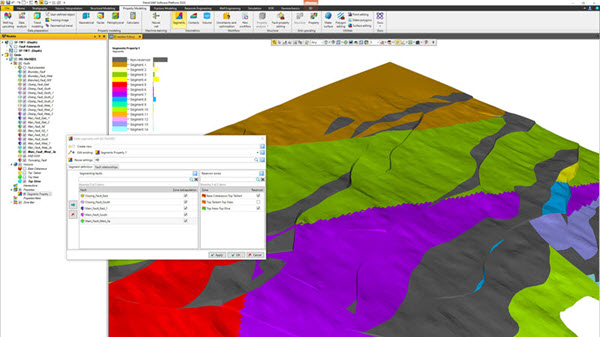
In Petrel 2020.3, a significant update has been made to the ‘Make segments’ process allowing for user-defined, repeatable grid segmentation for structural grids. User-defined parameters for fault relationships can now be set to control the virtual extrapolation of faults through their truncations. The defined parameters are stored and can be re-applied to other grids, or to properties on the same grid, to reproduce equivalent grid segments. This update also allows alternative segmentation to be applied to individual reservoir units, providing enhanced characterization of complex stacked reservoir systems.
Back to top
Automate over 80% of work steps in Petrel 2020.2
The workflow editor is one of the most powerful tools available in Petrel subsurface software. Use it to automate work steps from everyday housekeeping to assessing reservoir uncertainty and share them across your organization using the new export/import functionality.
You can automate over 80% of work steps in Petrel 2020.2 using the workflow editor. Arguably one of the most powerful tools in Petrel, and available with every core license, the workflow editor enables you to automate tasks ranging from everyday housekeeping (object renaming and filing) to assessing reservoir uncertainty.
New work steps have been added to the functions list:
-
Convert wells to polygons
-
Create isochore points
-
Create new well top attribute
-
Continuous/discrete well top attribute operations
-
Add/update zone logs
-
Initialize from maps
Go a step further and share your workflows by taking advantage of the new ability to export and import workflows. Share your expertise and create a centralized library of workflows for everyone in your organization
Back to top
Find that object, quickly
Stop scrolling through your input pane for the right data object; use the improved smart search performance to quickly find the object you need.
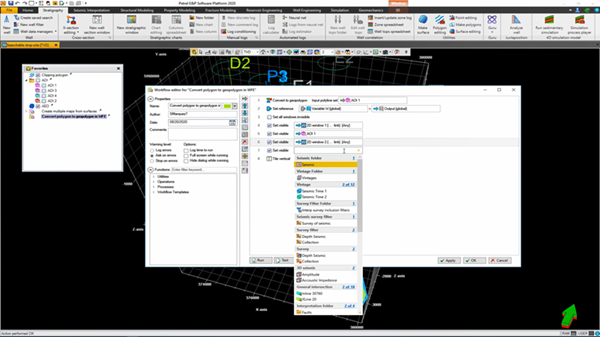
When using the search capabilities at object drop sites the results are now categorized by object type and will show you the total count of items that fit into that category. You can also expand the results to show the full list of items. This enables you to see a full list of relevant objects in your project from the drop site, and quickly find the correct object by starting to type the name or filter the results by selecting the correct object type in the list.
Smart searches are enabled in an object’s Operations tab in the Setting dialog box, in supported workflow editor work steps and in the Make/edit polygons process.
Back to top
Customize well log exports
The highly demanded ability to customize well log exports is delivered in Petrel 2020.3, offering flexibility and efficient log exports.
The new log export manager enables you to select which logs you want to export for a custom selection of wells. For your selected wells you can specify the depth interval, customize the export sampling rate, specify internal or numeric precision, select multiple indexes and the output file type.
Back to top
